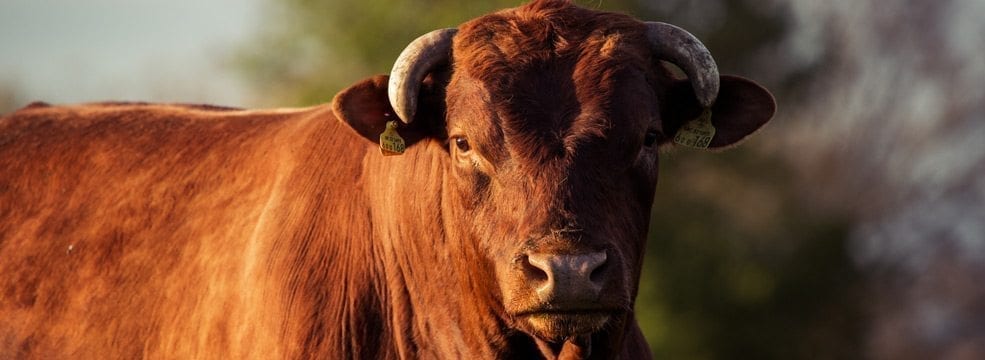At Killenure Dexter Gourmet, we are passionate about the historical legacy of the Dexter breed, and always strive to tell their story in a respectful manner. Towards this aim we’ve gathered information from a variety of different sources, and are delighted to share it with you now.
Dexter Cattle
The origin of the Dexter is quite obscure. The common assumption has been that this breed is a cross between the Kerry and some other breed, perhaps the Devon. It has also been claimed that a “Mr. Dexter,” who was agent to Lord Hawarden, is responsible for this Irish breed.
The Dexter originated in the South Western region of Ireland. Like the Kerry they are descended from the predominately black cattle of the early Celts. Dexter Cattle, Ireland’s native beef breed, descended from the mountain cattle of Southern Ireland. Today, around 2,000 Dexter Cattle remain in Ireland, displaced by the larger International Breeds. These larger genetically-developed breeds, along with their high-processed feeds and medications, dominate the global beef industry. Dexter Cattle however, grass-fed and slow-maturing, remain the natural choice for small-holders seeking to produce traditional tasting beef from sustainable organic farming practices.
Breed History
The existence of Dexters was first reported in Ireland in 1776. Their written history prior to then is non-existent. However it is clear from documents since that time that Dexters are an integral part of the Kerry cattle breed which is native to Ireland, so much so, that a mating of 2 Dexters can produce a Kerry and vice versa.
Dexter Cattle, first documented in the 1830’s by David Low, Professor of Agriculture at Edinburgh University. Professor Low studied the natural history of farmed animals of Britain and Ireland, culminating in 1842 with the landmark publication “On the Domesticated Animals of the British Islands”. This document records 20 distinct breeds of cattle, many of which are no longer found in today’s intensive farming industry. One native Irish breed he refers to is the Dexter, named after a Mr Dexter who managed a 2,400 acre estate in County Tipperary for Lord Hawarden.
In 1730 the Maude family built Dundrum House County Tipperary with 2400 acres. Dundrum was the seat of the Viscounts Hawarden in county (The family seat was Dundrum House, near Cashel) Tipperary in the 18th and 19th centuries. The Ordnance Survey Name Books mention that the demesne was well-planted in 1840. Dundrum was held in fee by Viscount Hawarden and valued at £85 at the time of Griffith’s Valuation. In 1844 the house was described as a capacious structure standing in the centre of one of the most expensive wooded parks in the country.
A farm manager, Mr Dexter, came to Dundrum in 1750 (Note Christopher Dexter in the family tree) + extract from above (Christopher DEXTER of Sysonby, Leicestershire, grazier. He produced a curious breed of cattle by selection from the best of the hardy mountain cattle in the area to produce the Dexter breed, the smallest native breed of cattle in the British Isles and Ireland. Dexter are a hardy, dual-purpose cattle, producing excellent beef and milk, an ideal suckler cow for conservation grazing.
The frequently heard theory that the Dexters are a comparatively new breed is a complete fallacy as the breed is fully described and mentioned by its proper name, in the report on Irish cattle written in 1845, by Mr David Low.Professor Low distinguishes the Dexter by its ‘roundness and depth of carcass’ and its “short legs, and a small space from the knee and hock to the hoofs”, probably originating the saying “Tipperary beef down to the heels”. He records ‘This gentleman (Mr Dexter) is said to have produced his curious breed by selection of the best of the mountain cattle of the district. … When any individual of a Kerry drove appears remarkably round and short-legged, it is common for the country people to call it a Dexter.
Dexter cattle were first introduced into England in 1882, when ten Dexters were purchased by Mr. Martin. J. Sutton of Kidmore Grange, Oxfordshire from Mr. James. Robertson of La Mancha, North Malahide, Dublin. They were first shown at the Royal Show at Norwich in 1886. By 1892, this native Irish breed was so well established in Great Britain that at a meeting of breeders at the Smithfield club on December 6th resulted in the formation of the Kerry and Dexter/Kerry cattle society.

Share This